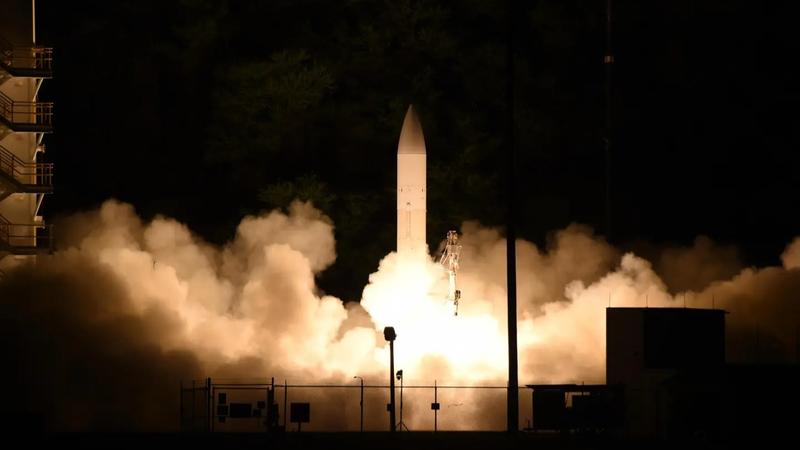Published 21:02 IST, May 16th 2024
United States and Japan Cement Strategic Alliance to Develop Hypersonic Missile Defense System
The US and Japan unite to create a hypersonic missile defense system, targeting threats during flight glide phases.

Washington: The United States and Japan have joined forces to develop a hypersonic missile defence capability, aiming to thwart threats during the glide phase of flight. This collaborative effort, announced on May 15 by both the Missile Defense Agency (MDA) and Japan’s Defense Ministry, underscores a pivotal moment in their enduring defence partnership.
The groundwork for this agreement has been laid over more than a year, with ongoing discussions between the two nations. The development process for the Glide Phase Interceptor (GPI) is in its infancy, with the MDA targeting a first fielding in the mid-2030s, as per its budget plan. Two leading defence contractors, Raytheon Technologies and Northrop Grumman, are competing for the design of the GPI, having secured contracts in June 2022.
Strategic Implications of the Agreement
During the Japan-U.S. summit meeting held in August 2023, the governments disclosed their collaborative efforts towards the development of GPI. These interceptors are envisaged to be compatible with the U.S. Navy’s Aegis ballistic missile defense-equipped destroyers. Utilizing the standard vertical launching system, the weapon will be integrated with the modified Baseline 9 Aegis Weapon System, vital for detecting, tracking, controlling, and engaging hypersonic threats.
Defeating hypersonic weapons during their glide phase poses a formidable technical challenge due to their extraordinary speed and manoeuvrability. Under the GPI Cooperative Development Project Arrangement, a component of the U.S.-Japan bilateral Memorandum of Understanding for Research, Development, Test, and Evaluation projects, both nations are committed to tackling this challenge head-on.
Urgent Need for Enhanced Interception Capabilities
In a parallel statement, the Japanese MOD emphasized the urgency of bolstering interception capabilities against evolving missile threats. The ministry highlighted the rapid advancements in missile-related technologies, particularly hypersonic weapons, in the vicinity of Japan, necessitating proactive measures.
According to the U.S. government’s statement, the agreement on GPI development aims to enhance regional deterrence while reinforcing the longstanding missile defence cooperation between the U.S. and Japan. The MDA will lead the development efforts, with Japan taking the helm in developing rocket motors and propulsion components for GPI.
This collaborative endeavour builds on previous successful ventures between the U.S. and Japan, notably the co-development of the Raytheon Technologies-manufactured SM-3 Block IIA missile. While the timeline for GPI's operational capability extends into the 2030s, Congress has expressed its expectations for an initial operational capability by the end of 2029, followed by full operational capability by 2032, with a delivery target of at least 24 GPIs by 2040.
Updated 21:18 IST, May 16th 2024




